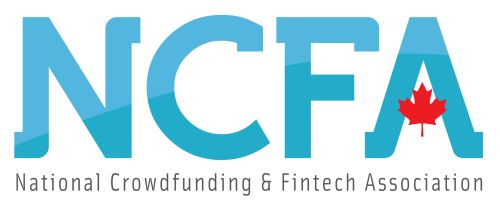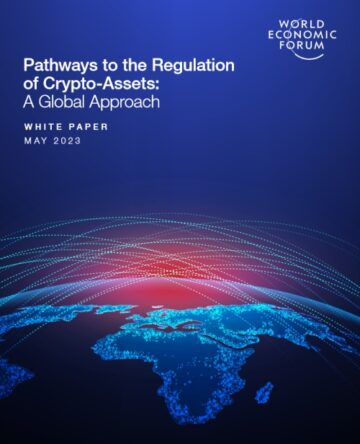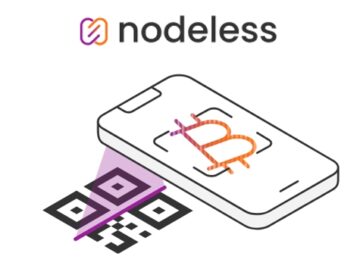May 14, 2024

 Image: Pixabay/TarikVision
Image: Pixabay/TarikVisionInterac is the dominant online payment transfer system in Canada. Last August, the company reported that for the first time ever, they had recorded over a billion mobile transactions in the previous twelve-month period. They claimed this proves that Canadians prefer using a mobile device for everyday transactions.
Mobile Interac Debits pass through a tokenization platform for digital payments, allowing consumers to make a payment without having to share their financial information. This could be at a contactless point-of-sale reader, for a virtual purchase, or when using the mobile app. Consumers are choosing Interact because it reduces fraud risk and is simple and convenient.
The latest data from Interac shows the number of Interac Debit contactless payments has gone up by over 50% in the past year. These payments are made using smartphones or wearable devices. Between August 2022 and July 2023, there were just over a billion transactions. However, Interac is not just used for physical purchases.
It continues to dominate online transactions and is used to purchase everything from travel tickets and online shopping to paying for virtual entertainment. It is the payment method of choice for many Canadians (mostly in Ontario) who enjoy a flutter at an online casino, including the listed ones that accept Interac. While risk and reward are what attract many people to gambling, they still want to know they are playing at reputable sites and that their transactions are secure.
Compared to all other business and consumer cards issued in Canada, Interac has by far the largest share. In 2022, there were 15.43 billion such transactions in Canada on cards issued by Visa, Mastercard, Interac and American Express. Interac is Canada’s top national debit card, with over 40 percent of the total market. Visa is its nearest rival at just under 35 percent, with Mastercard accounting for almost 23 percent and America Express having just under two percent.
William Keliehor, Chief Commercial Officer at Interac, asserts that the transaction milestones demonstrate that consumers are getting more comfortable using mobile technology for day-to-day transactions. He noted that consumers are gradually switching from physical cards to mobile devices for Interac Debit contactless transactions and payments, as well as choosing to use Interact Debit for online shopping.
He said,
“Canadians are embracing technologies that make their lives faster, more seamless and more convenient. Our Interac Debit data is showing mobile payments reaching a critical mass point, where a third of contactless transactions are now completed with a mobile device.”
The trend might have started with people slipping their debit cards into the back of their phone case and becoming accustomed to not having to carry their physical wallets with them. Then, improved battery life and connectivity made people feel confident that they could ditch the plastic entirely and rely on the e-wallet on the phone. The data backs this up as more consumers are using their mobile phones to complete in-person transactions instead of using their physical cards. Mobile payments rose from 18 percent of these transactions in June 2022 to 24 percent in July 2025. A quarter of Interac Debit contactless payments were done using an e-wallet on a mobile device.
In-app transactions are on the up, too. Interac’s In-App transactions surpassed 8.6 million and grew 17.5 percent from 2022 to 2023. There can be no denying that the pandemic accelerated the growth in digital payments. The trend had started before the pandemic, but contactless spending limits were low. However, increased spending limits for tap-to-pay card transactions was one of the factors that encouraged the trial of contactless payments amongst consumers who had previously been resistant. Once they felt comfortable with contactless payments, the next step was to use the in-app payment feature, which was not constrained by the limits imposed on physical card transactions.
However, Interac’s Keliehor claims these factors are secondary to the major driver of increased Interac transactions, which he says are debit-first and mobile-first payments.
He claimed,
“More and more Canadians are choosing to pay using a mobile device like a smartphone or wearable device, and we’re seeing this reflected in our transaction data as well as survey findings.”
Unsurprisingly, it is Gen Zers who are driving the change and influencing older generations to make mobile payments. They are the ones most likely not to carry a wallet and rely on a mobile device to make payments. Recent data shows that 78 percent of Canadian Gen Zers complete in-person smartphone transactions.
Generation Xers and Baby Boomers have also become less wary of mobile payments and are embracing them now. Among Gen Xers, 42 percent pay using their smartphones. However, it appears they have been nudged into doing so by the younger generation. Having watched Gen Zers in their circles leading the way, they then give it a go themselves. More than half of younger people say they have shown older family members how to use contactless mobile payments.
As Canadians adopt to new payment technologies, they take for granted that businesses will offer a full spectrum of payment options, including in-app payments, mobile contactless and online secure checkouts. Seventy-one percent of Canadians expect a ‘pay by debit’ option whether they are paying digitally, in person or online. Cash usage is definitely declining, and many stores just do not accept it anymore. We have become used to this when shopping online or on the go, but it can come as a shock when travelling. Each country has its own norms on this. Visitors to the UK can easily use digital payments, but small and medium businesses in countries like Belgium can still be cash-only environments.
See: How Fintechs Can Integrate AI for Efficiency Gains
It is expected that Interac will continue to dominate the Canadian market, and people in the sector are referring to the move away from cash and towards debit payments for everything as “the big shift”. Businesses of all sizes need to be able to meet customer expectations, and there will be even more innovation in this area in the months and years ahead.
We might still enjoy our national bank holidays, but we now live in a 24-hour digital economy that never rests.

 The National Crowdfunding & Fintech Association (NCFA Canada) is a financial innovation ecosystem that provides education, market intelligence, industry stewardship, networking and funding opportunities and services to thousands of community members and works closely with industry, government, partners and affiliates to create a vibrant and innovative fintech and funding industry in Canada. Decentralized and distributed, NCFA is engaged with global stakeholders and helps incubate projects and investment in fintech, alternative finance, crowdfunding, peer-to-peer finance, payments, digital assets and tokens, artificial intelligence, blockchain, cryptocurrency, regtech, and insurtech sectors. Join Canada’s Fintech & Funding Community today FREE! Or become a contributing member and get perks. For more information, please visit: www.ncfacanada.org
The National Crowdfunding & Fintech Association (NCFA Canada) is a financial innovation ecosystem that provides education, market intelligence, industry stewardship, networking and funding opportunities and services to thousands of community members and works closely with industry, government, partners and affiliates to create a vibrant and innovative fintech and funding industry in Canada. Decentralized and distributed, NCFA is engaged with global stakeholders and helps incubate projects and investment in fintech, alternative finance, crowdfunding, peer-to-peer finance, payments, digital assets and tokens, artificial intelligence, blockchain, cryptocurrency, regtech, and insurtech sectors. Join Canada’s Fintech & Funding Community today FREE! Or become a contributing member and get perks. For more information, please visit: www.ncfacanada.org
Related Posts
- SEO Powered Content & PR Distribution. Get Amplified Today.
- PlatoData.Network Vertical Generative Ai. Empower Yourself. Access Here.
- PlatoAiStream. Web3 Intelligence. Knowledge Amplified. Access Here.
- PlatoESG. Carbon, CleanTech, Energy, Environment, Solar, Waste Management. Access Here.
- PlatoHealth. Biotech and Clinical Trials Intelligence. Access Here.
- Source: https://ncfacanada.org/interac-continued-to-dominate-the-online-transfer-payment-segment-in-canada/
- :has
- :is
- :not
- :where
- $UP
- 14
- 15%
- 150
- 17
- 2018
- 2022
- 2023
- 2025
- 23
- 24
- 32
- 35 percent
- 35%
- 40
- 42
- 5
- 6
- 62
- 8
- a
- Able
- accelerated
- Accept
- Accounting
- adopt
- affiliates
- ahead
- AI
- All
- Allowing
- almost
- also
- alternative
- alternative finance
- america
- American
- American Express
- among
- amongst
- an
- and
- anymore
- app
- appears
- ARE
- AREA
- artificial
- artificial intelligence
- AS
- Assets
- At
- attract
- AUGUST
- away
- Baby
- back
- backs
- Bank
- battery
- Battery life
- BE
- because
- become
- becoming
- been
- before
- Belgium
- between
- Big
- Bill
- Billion
- blockchain
- business
- businesses
- but
- by
- cache
- CAN
- Canada
- Canadian
- Canadians
- card
- Cards
- carry
- case
- Cash
- Casino
- chief
- choice
- choosing
- circles
- claimed
- claims
- closely
- come
- comfortable
- commercial
- community
- company
- complete
- Completed
- confident
- Connectivity
- constrained
- consumer
- Consumers
- Contactless
- contactless payments
- continue
- continued
- continues
- Convenient
- could
- countries
- country
- create
- critical
- Crowdfunding
- cryptocurrency
- customer
- customer expectations
- data
- day-to-day
- Debit
- Debit Card
- Debit Cards
- decentralized
- Declining
- definitely
- demonstrate
- device
- Devices
- digital
- Digital Assets
- Digital economy
- Digital Payments
- digitally
- distributed
- ditch
- do
- doing
- dominant
- dominate
- done
- driver
- driving
- e-wallet
- each
- easily
- economy
- ecosystem
- Education
- efficiency
- embracing
- encouraged
- engaged
- enjoy
- Entertainment
- entirely
- environments
- Ether (ETH)
- Even
- EVER
- everyday
- everything
- expect
- expectations
- expected
- express
- factors
- family
- family members
- far
- faster
- Feature
- feel
- felt
- finance
- financial
- financial information
- financial innovation
- findings
- fintech
- fintechs
- First
- first time
- flutter
- For
- fraud
- Fraud Risk
- from
- full
- full spectrum
- funding
- funding opportunities
- Gains
- Gambling
- Gen
- generation
- generations
- get
- getting
- Give
- Global
- Go
- gone
- Government
- gradually
- granted
- grew
- had
- Half
- Have
- having
- he
- helps
- High
- holidays
- How
- How To
- However
- http
- HTTPS
- image
- imposed
- improved
- in
- Including
- increased
- industry
- influencing
- information
- Innovation
- innovative
- instead
- Insurtech
- integrate
- Intelligence
- interact
- into
- investment
- Issued
- IT
- ITS
- Jan
- jpg
- July
- june
- just
- Know
- largest
- Last
- latest
- leading
- less
- Life
- like
- likely
- limits
- Listed
- live
- Lives
- Low
- made
- major
- make
- many
- many people
- Market
- Mass
- mastercard
- max-width
- medium
- Meet
- member
- Members
- method
- might
- Milestones
- million
- Mobile
- Mobile app
- mobile device
- mobile devices
- mobile payments
- mobile phones
- Mobile technology
- months
- more
- most
- mostly
- move
- National
- National Bank
- Need
- networking
- never
- New
- next
- no
- norms
- noted
- now
- number
- of
- offer
- Officer
- older
- on
- once
- ONE
- ones
- online
- online casino
- Online payment
- online shopping
- online transactions
- Ontario
- opportunities
- Option
- Options
- or
- Other
- our
- over
- own
- pandemic
- partners
- pass
- past
- Pay
- paying
- payment
- payment method
- payment options
- payments
- peer to peer
- People
- percent
- perks
- person
- phone
- phone case
- phones
- physical
- plastic
- platform
- plato
- Plato Data Intelligence
- PlatoData
- playing
- please
- Point
- prefer
- previous
- previously
- projects
- proves
- provides
- purchase
- purchases
- Quarter
- reaching
- Reader
- recent
- recorded
- reduces
- referring
- reflected
- Regtech
- rely
- Reported
- reputable
- resistant
- Reward
- Risk
- Rival
- ROSE
- s
- Said
- say
- says
- seamless
- secondary
- sector
- Sectors
- secure
- seeing
- segment
- Services
- Share
- Shopping
- showing
- shown
- Shows
- Simple
- Sites
- sizes
- slipping
- small
- smartphone
- smartphones
- So
- Spectrum
- Spending
- stakeholders
- started
- Step
- Stewardship
- Still
- stores
- such
- surpassed
- Survey
- system
- Take
- Technologies
- Technology
- than
- that
- The
- the UK
- their
- Them
- themselves
- then
- There.
- These
- they
- Third
- this
- thousands
- Through
- tickets
- time
- to
- today
- Tokenization
- Tokens
- too
- top
- Total
- towards
- transaction
- Transactions
- transfer
- travel
- Trend
- trial
- two
- Uk
- under
- Usage
- use
- used
- using
- vibrant
- Virtual
- visa
- Visit
- visitors
- Wallet
- Wallets
- want
- was
- Way..
- we
- wearable
- wearable devices
- WELL
- were
- What
- when
- whether
- which
- while
- WHO
- will
- with
- without
- works
- year
- years
- Younger
- zephyrnet












